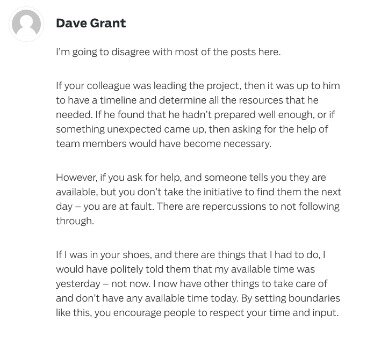Contents:


Auditors must have discussions with the client’s management about its objectives and expectations, and its plans for achieving those goals. Control risk played a major part in the Enron scandal – the people providing the misleading numbers were widely respected and some of the most senior people in the organization. The audits were thus being carried out on the wrong numbers and no one knew until it was too late to do anything about it.
Despite all the benefits of audit risk models, there are several downsides to keep in mind. First, it’s difficult to place quantitative value on inherent risk so that the model can imply unrealistic accuracy. Also, control risk may not highlight all factors that determine figures in financial statements. The model needs sufficiently large numbers for an accurate review, which rules out the application in smaller audits. An audit risk model is a conceptual tool applied by auditors to evaluate and manage the various risks arising from performing an audit engagement.
Audit Risk Model
There are three components of an audit risk from the viewpoint of the auditor — inherent risk, control risk and detection risk. Audit opinions state that financial statements are presumed to be free from material misstatements. The client is said to demonstrate a high control risk of the controls if a specific assertion does not operate effectively or if the auditor deems that testing the internal controls would be an inefficient use of audit resources.
FICO’s Blockchain Usage — Now Patented — Boosted Firm’s … – Blockworks
FICO’s Blockchain Usage — Now Patented — Boosted Firm’s ….
Posted: Tue, 18 Apr 2023 05:34:01 GMT [source]
The auditor also should consider whether there may be oral modifications to agreements, such as unusual payment terms or liberal rights of return. When the auditor believes there is a moderate or high degree of risk that there may be significant oral modifications, he or she should inquire about the existence and details of any such modifications to written agreements. One method of doing so is to confirm both the terms of the agreements and whether any oral modifications exist. If the audit assurance rate is 95%, then the level of acceptable audit risk is 5%.
What are Audit opinions? 4 Types of Audit Opinions Explained with Example
In the examination of accounts receivable, for example, alternative procedures may include examination of subsequent cash receipts , shipping documents, or other client documentation to provide evidence for the existence assertion. In the examination of accounts payable, for example, alternative procedures may include examination of subsequent cash disbursements, correspondence from third parties, or other records to provide evidence for the completeness assertion. Maintaining control3 means establishing direct communication between the intended recipient and the auditor to minimize the possibility that the results will be biased because of interception and alteration of the confirmation requests or responses. Provides guidance on performing alternative procedures when responses to confirmation requests are not received (see paragraphs .31 and .32). Inherent risk is ________ related to planned detection risk and ________ related to the amount of audit evidence.
RomReal : 2022 Auditor’s Report – Marketscreener.com
RomReal : 2022 Auditor’s Report.
Posted: Wed, 19 Apr 2023 08:40:12 GMT [source]
For example, auditors should have a proper risk assessment at the planning stages. For example, the auditor needs to set up a proper audit plan, audit approach, and audit strategy. All relevant inherent risks that might affect the financial statements are identified and rectified on time. The auditors’ goal when conducting audit is to reduce the audit risk to an acceptable level. Therefore, under the audit risk model, the answer is not always in numerical terms. There are often other descriptive statistics that are used in order to ascertain the level of risk involved.
Consequently, the auditor is expected to focus resources on those areas most likely to contain risks of material misstatement, which means that reduced resources are targeted at other areas of an audit. The auditor should also assess audit risks at the time they prepare the audit plan. Normally, this is done by using a control framework like COSO to assess all angles of the business process. Auditors must perform risk assessments to ensure that all possible risks of misstatements that might happen to the financial statements are identified.
Audit Risks: Definition, Types, Models and More
The common cause of detection risk is improper audit planning, poor engagement management, wrong audit methodology, low competency, and lack of understanding of audit clients. Once the internal financial statements and risks are properly assessed, the audit programs are properly tailored, then Control Risks are minimized. If the auditor presumes the control risk to be low, he would reduce the intensity of the audit procedures, thereby running a higher detection risk. The probability of the auditor’s failure to detect any misstatements during the course of his audit is termed as detection risk.
Outlining potential risks using an audit risk model helps you minimize issues like material misstatement and others. One of the audit risk model examples is that the control risk can be high for a valuation assertion in accounts calculated through a complex manner or with the accountant’s best judgment. Also, this could happen if the internal controls don’t have an independent review and verification process for financial statements. Before running the formula, auditors will need to study the client’s business, including its daily operations and financial reporting procedures.

By using the audit risk model, auditors can effectively plan and execute their audits. In making that assessment, the auditor should consider the materiality of the account balance and his or her inherent and control risk assessments. When the auditor concludes that evidence provided by confirmations alone is not sufficient, additional procedures should be performed. For example, to achieve an appropriately low level of audit risk related to the completeness and existence assertions for accounts receivable, an auditor may perform sales cutoff tests in addition to confirming accounts receivable. ISA 315 gives detailed guidance about the understanding required of the entity and its environment by auditors, including the entity’s internal control systems.
Why do auditors need to perform a risk assessment?
Lower inherent risk implies that the account is not likely to be materially misstated. For example, the firm just won the new big construction company and most of the audit team member including manager and partner are new to the construction company. In this case, the detection risks are high and the change that auditor find mistrial misstatements are really low. Detection risk describes the possibility of audit procedures not detecting material misstatement. The UK Auditing Practices Board announced in March 2009 that it would update its auditing standards according to the clarified ISAs, and that these standards would apply for audits of accounting periods ending on or after 15 December 2010. UK and Irish students should note that there are no significant differences on audit risk between ISA 315 and the UK and Ireland version of the standard.

Getting a high inherent risk means the transaction class, attached disclosure, or balance is at risk of material misstatement. Inherent risk is the risk that a client’s financial statements are susceptible to material misstatements in the absence of any internal controls to guard against such misstatement. Inherent risk is greater when a high degree of judgment is involved in business transactions, since this introduces the risk that an inexperienced person is more likely to make an error. It is also more likely when significant estimates must be included in transactions, where an estimation error can be made. Inherent risk is also more likely when the transactions in which a client engages are highly complex, and so are more likely to be completed or recorded incorrectly.
Sometimes, even with the best intentions and the right controls, the audit ends up missing vital information and does not uncover problems. There is an inherent risk of inaccuracy in audits due to the complex nature of businesses and the business environment. Sometimes the audit may make the right recommendations for the time when the audit was being performed, but those recommendations may no longer be viable once the audit report is published. The acceptable audit risk is an auditor’s risk level that they accept to release an unqualified opinion about financial statements, which could be materially misstated.
How to calculate audit risks?
The auditor performs the control risk assessment on the financial statement level of risk and its assertive risk level. So, such an assessment requires an auditor to have an understanding of the internal controls in an organization. It is vital as the auditors must evaluate components and determine an appropriate level of audit procedures. The auditor may also adjust the level of inherent and control risk assessments.

This risk mainly occurs in the case where auditors’ methods or procedures is insufficient to detect the existing shortcomings of the financial statements. In other words, detection risks mainly occur because of the inefficacy of the stated financial statements. Control Risks are the risks that exist within the company because of the lack of internal controls present within the company.
In that case, the auditor may need to perform more extensive audit procedures. As a result, it reduces detection risk and achieves an acceptable overall audit risk. Conversely, if inherent and control risks are assessed as low, the auditor may be able to perform less extensive audit procedures, resulting in a lower overall audit risk. The auditor must assess each component to determine an appropriate level of audit risk and design and execute audit procedures that address the identified risks. The ultimate goal is to obtain sufficient and appropriate audit evidence to support the auditor’s opinion on the fairness of the financial statements. Basically, management is required to set up and assess the effectiveness and efficiency of internal control over financial reporting to make sure that financial statements are free from material misstatements.
The IIA to Host Free Webinars on April 18 Explaining Proposed Changes to Global Internal Audit Standards
Audit risk is the risk that the audit will have human errors in it and thus may not be able to uncover all the problems in the organization. Audit risk is inherent in all audits and needs to be mitigated through audit reviews and assessments carried out by someone other than the original auditor. Audit risk modelis used by the auditors to manage the overall risk of an audit engagement. Such as the use of sampling for the selection of transactions.Detection risk can be reduced by auditors by increasing the number of sampled transactions for detailed testing. For Charismatic Electronics Inc., the inherent risk could be considered moderate to high.
- Conversely, where the auditor believes the inherent and control risks of an engagement to be low, detection risk is allowed to be set at a relatively higher level.
- It would be inefficient to address insignificant risks in a high level of detail, and whether a risk is classified as a key risk or not is a matter of judgment for the auditor.
- Therefore, performing such an assessment will require the auditor to possess a strong understanding of the organization’s internal controls.
- Before running the formula, auditors will need to study the client’s business, including its daily operations and financial reporting procedures.
Therefore, encumbrance accounting controls must not only be present within the company, they should also be effectively minimized in order to ensure that the company has protection against fraudulent activities. In the case where an organization does not have sufficient internal controls present, it substantially increases the work of the auditors. The interrelationship of the three components of audit risk is outside the scope of this current article. Paper F8 students, however, will typically be expected to have a good understanding of the concept of audit risk, and to be able to apply this understanding to questions in order to identify and describe appropriate risk assessment procedures.
The degree of subjectivity in the measurement of financial information related to the risk, especially those measurements involving a wide range of measurement uncertainty. Let’s consider a company called Charismatic Electronics Inc. that manufactures and sells electronic devices. The company has been in business for five years and has recently expanded its operations to several new markets. It has experienced rapid growth in recent years and has a diverse range of products.
The audit risk model indicates the type of evidence that needs to be collected for each transaction class, disclosure, and account balance. It is best determined during the planning stage and only possesses little value in terms of evaluating audit performance. The concept of audit risk is of key importance to the audit process and Paper F8 students are required to have a good understanding of what audit risk is, and why it is so important. For the purposes of the Paper F8 exam, it is important to understand that audit risk is a very practical topic and is therefore examined in a very practical context.
At this stage, the auditor might understand the client nature of the business, major internal control over financial reporting, financial reporting system, and many more. Inherent risk refers to the risk that could not be protected or detected by the entity’s internal control. This risk could happen due to the complexity of the client’s nature of business or transactions. The extent of overall risk the auditor is willing to take and the efficiency of the internal control systems decides the nature, extent and timing of the audit procedures to be carried out by him. This is primarily because of the fact that the auditors need to identify procedures that ensure that all the relevant ground pertaining to internal controls within the company is properly covered. The purpose of this article is to give summary guidance to Paper FAU, Paper F8 and P7 students about the concept of audit risk.
For example, having enough team members and those team members have good experiences and knowledge related to the client’s business and financial statements. Mostly, COSO frameworks are the popular frameworks that use by most international audit firms to document and assess internal controls. If the client’s internal control seems to be strong, the audit needs to confirm if the control is working by testing internal control. This springs from the reason that the systems, as designed by the management, may not be implemented in true letter and spirit.
